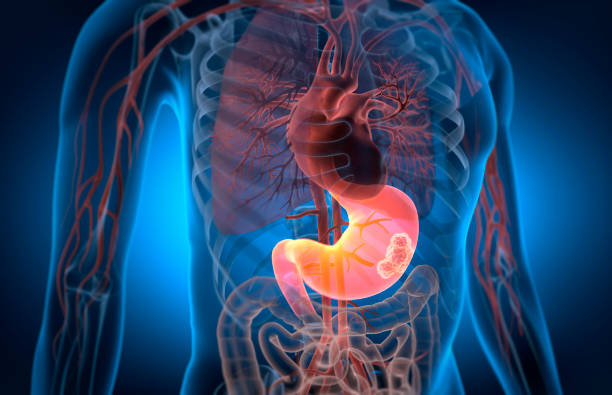Long COVID remains one of the most persistent and perplexing aftereffects of the SARS-CoV-2 pandemic. For millions of people around the world, the virus doesn’t just vanish after the acute infection phase—it lingers, leaving them with an array of symptoms that disrupt daily life. These symptoms range from fatigue and brain fog to dizziness and palpitations, and they can stick around for months or even years after the initial infection. But what exactly happens after the virus? How do these symptoms evolve? And why do some people recover, while others struggle indefinitely?
A new study from Mass General Brigham is shedding light on these questions. By following over 3,500 patients, the researchers have uncovered a startling complexity in the way long COVID manifests and evolves. In fact, they identified eight distinct patterns—or “trajectories”—that the disease can take, each with its own timeline and severity. This finding could be a game-changer in how we understand long COVID and how we address its ongoing impact on public health.
A Year Later, Still Struggling
Long COVID isn’t just a passing phase for many people. In fact, the study, published in Nature Communications, shows that 10.3% of participants still had symptoms consistent with long COVID three months after their initial SARS-CoV-2 infection. But perhaps even more striking is the persistence of these symptoms. A year later, 81% of those who reported long COVID symptoms at the three-month mark continued to experience them—either persistently or intermittently.
Imagine living with this uncertainty for an entire year. The symptoms can be both invisible and debilitating, often fluctuating in severity. For many, this means coping with physical and mental exhaustion, along with cognitive difficulties that make it hard to concentrate or remember simple tasks. It’s a reality that millions of people are now living with, but until this study, much of what happens after the initial infection remained unclear.
The researchers’ work offers crucial insight into this ongoing struggle, revealing that there is no single, one-size-fits-all experience of long COVID. Some people may see their symptoms improve gradually, while others face persistent challenges or even worsening health over time.
The Complexity of Long COVID: Eight Different Trajectories
Bruce Levy, MD, a senior author of the study, emphasized the urgency of understanding the various trajectories of long COVID. He explained, “This study addresses an urgent need to define the differing long COVID trajectories.” By tracking the patients’ symptoms over time, the team was able to identify eight distinct paths that long COVID can take.
These trajectories vary greatly. Some patients experience persistently severe symptoms, while others see their symptoms come and go—intensifying at times, then easing up. Some participants start with mild symptoms that worsen over time, while others seem to get better gradually, though at a slower pace than expected. There are even cases where new symptoms appear well beyond the 15-month mark, suggesting that the long-term effects of the virus can be unpredictable and long-lasting.
Dr. Levy’s team believes that understanding these different patterns is key to addressing the needs of people with long COVID. “Our findings will help determine what resources are needed for clinical and public health support of individuals with long COVID,” he said. But the value of this study doesn’t stop there. It also opens the door to new scientific inquiries. By identifying these varying trajectories, future studies can explore risk factors, potential biomarkers, and therapeutic targets that might explain why patients experience different outcomes and timelines.
The Role of Gender and Hospitalization in Long COVID
One of the key findings from the study is that certain groups of people are more likely to experience severe or persistent long COVID symptoms. Female patients, for instance, were more prone to developing persistent long COVID symptoms than their male counterparts. Additionally, those who had been hospitalized during their acute SARS-CoV-2 infection were more likely to experience long-term health struggles.
This observation aligns with what we know about many chronic diseases: gender and the severity of the initial infection can play a significant role in long-term outcomes. But the study doesn’t stop there. The researchers hope that their findings will serve as a stepping stone for future studies that could identify even more risk factors, such as underlying health conditions, genetic predispositions, or environmental influences.
“We are just beginning to understand why some people recover quickly and others continue to struggle,” explained Tanayott Thaweethai, Ph.D., the study’s first author. “The variability we identified will enable future studies to evaluate risk factors and biomarkers that could explain why patients vary in time of recovery.” This focus on variability is crucial. It’s one thing to know that long COVID exists; it’s another to understand why some people recover swiftly while others don’t.
Why This Study Matters: A Beacon of Hope
The findings from this study offer more than just data—they provide a roadmap for the future. As researchers continue to unravel the complexities of long COVID, these trajectories could guide the development of targeted treatments and interventions. For example, identifying specific patterns may help doctors determine which patients are most at risk for prolonged or severe symptoms, enabling earlier intervention or more personalized care.
Moreover, the study reinforces the importance of continued research into long COVID. It is clear that this condition is far from a one-size-fits-all scenario. Its impact varies widely, but it remains a pressing issue for both the individuals affected and the healthcare system at large. With over 3,500 participants tracked over a significant period of time, this research serves as a reminder that long COVID is a chronic illness that demands attention—not just for those currently suffering, but for the future of public health as well.
The results of this study also carry hope. By improving our understanding of the long-term effects of SARS-CoV-2, researchers are paving the way for better treatments, resources, and policies. As Dr. Thaweethai put it, the findings “will help identify potential therapeutic targets,” giving scientists a clearer path forward. And for millions of patients living with long COVID, this could mean a future where treatment is more effective, recovery timelines are clearer, and support systems are better tailored to their needs.
In the end, this study doesn’t just fill in the gaps of our knowledge about long COVID—it opens up new avenues of possibility. By identifying the different trajectories of the disease, it brings us one step closer to understanding how to address the lingering shadows of the pandemic, offering hope to those who have been waiting for answers.
More information: Tanayott Thaweethai et al, Long COVID trajectories in the prospectively followed RECOVER-Adult US cohort, Nature Communications (2025). DOI: 10.1038/s41467-025-65239-4






